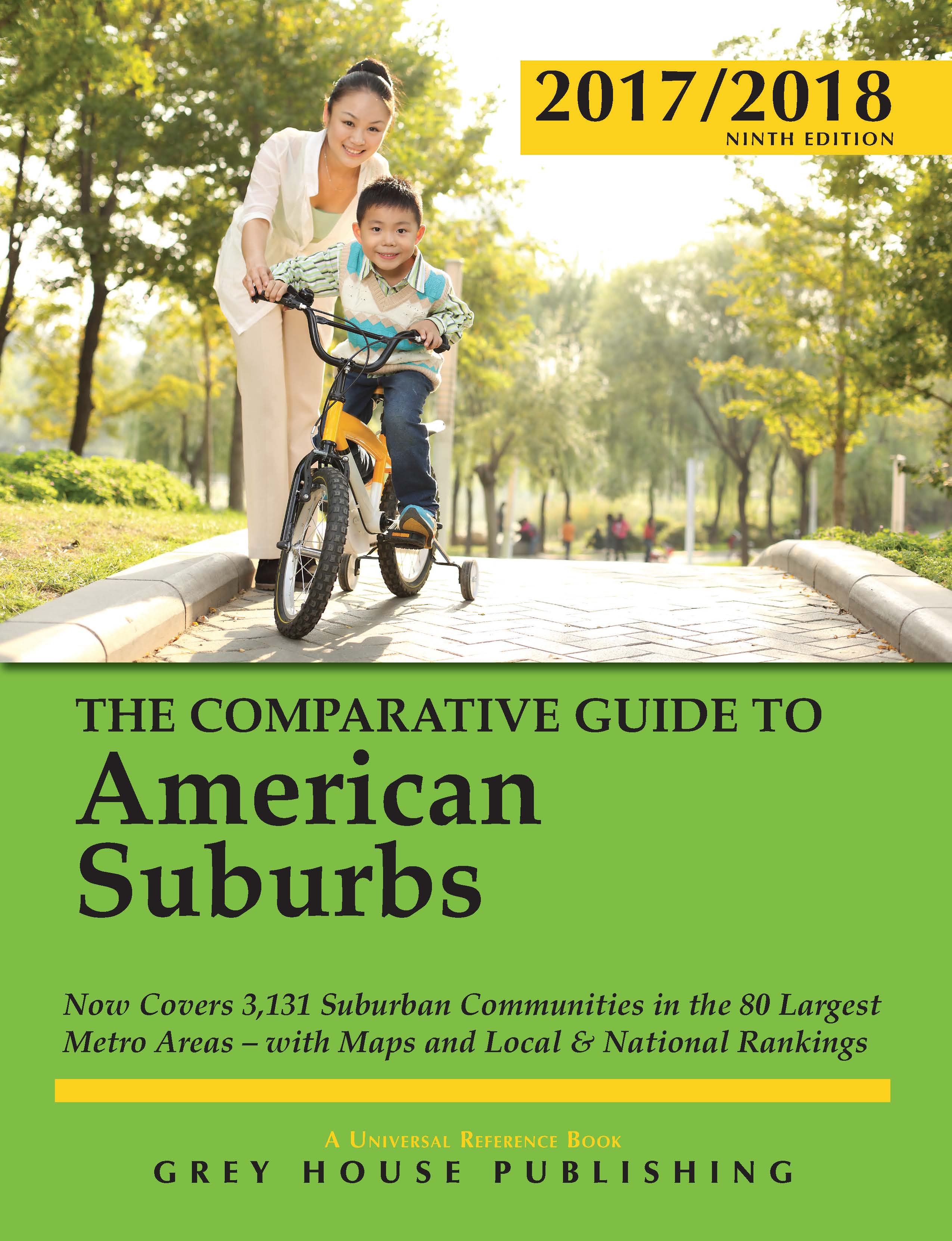
-Choice
"A great resource for research on relocating. The comparative data and ranking of these cities makes it easy to compare suburbs in a metro area and to simplify the job relocation decision…This is a great resource for any public or academic reference collection."
-Journal of Business & Finance Librarianship
"One of the most useful features is the suburban rankings for each one of 26 characteristics at the end of each metropolitan statistical area. This work creates comprehensive profiles of suburbs and comparative tables that are not easy to find elsewhere…Highly recommended for academic, public, and senior high school libraries."
-ARBA
The Comparative Guide to American Suburbs
2017/18 Edition
| Table of Contents | View Sample Pages | Full Text Reviews |
Pub. Date: June 2017
Softcover: 1,500 pages
ISBN: 978-1-68217-372-5
Price: $210.00
EBook ISBN: 978-1-68217-373-2 EBook Vendors
The Comparative Guide to American Suburbs provides detailed statistical information on 3,022 suburban communities (134 more than the previous edition) with populations of 10,000 or more, located within the 80 largest metropolitan areas in the United States.
The Comparative Guide to American Suburbs has been designed for the average user. The combination of usability, currency of data, breadth of scope, and ranking tables make this an exceptional guide to aid in relocation.
The Comparative Guide to American Suburbs is arranged alphabetically, first by metro area—from Akron, OH to Worcester, MA—then by individual suburb within each metro area. This two-volume statistical reference source begins with a helpful Introduction and User Guide to give readers a comprehensive explanation of the layout and sources used in this edition. Next come the metro area chapters, each of which begin with a State Map that outlines the suburbs, boundaries, and counties, as well as a Metropolitan Map that shows the location of each suburb in relation to its metropolitan center. Following this is a Metro Area Profile that includes nine major areas of concentration: Geography, Climate, Demographics, Religion, Income, Education, Housing, Health Insurance Coverage, and Air Quality. 24 subcategories are also included.
Within these Metro Area Profiles are individual Suburb Profiles for the metropolitan area covered. Each Suburb Profile includes 12 areas of concentration: Geography, History, Demographics, Economic Indicators, Employment by Occupation, Income, Taxes, Educational Attainment, Housing, Health Insurance Coverage, Transportation, and Safety. These areas are broken down into 45 subcategories, including new topics such as Population Growth, Individuals with Disabilities, Veterans, and more.
Following the Suburb Profiles in each chapter are Ranking Charts that rank all suburbs in each metropolitan area according to 71 data points (7 more than the last edition)—from first to last. These rankings include topics such as Poverty Rate, Population Density, Ancestry, Travel Time to Work, Homeowner Costs with/without Mortgage, Median Home Value, Violent Crime Rate, Unemployment Rate, and Educational Attainment.
National Rankings comprise more than 600 pages the end of this edition, ranking all 3,022 suburbs according to the 71 Ranking Chart data points, allowing for easy comparison of all suburbs in the nation at once. These ranking sections are particularly useful for those looking to compare different suburbs in the same metro area, or looking to compare suburban areas in different parts of the state or country.
Following this section are Metropolitan Area Rankings that rank all 80 metropolitan areas according to 51 data points. These rankings include topics such as Median Age, Religion, Income, Health Insurance Coverage, Air Quality, and much more.
The Comparative Guide to American Suburbs also features two helpful indexes. The Metropolitan Area Index is an alphabetical list of all 80 metro areas, along with their states, counties, and suburbs, indicating on what page their profiles appear. The second is the Suburb Index, which is an alphabetical list of all 3,022 suburbs.
Additionally, buyers of the print edition of The Comparative Guide to American Suburbs will receive two years of free online access to GOLD, the Grey House Online Database, featuring sortable comparative ranking tables in one easy-to-use online format, as well as even more data points than the print version. Call 800-562-2139 for more information.
The Comparative Guide to American Suburbs, 2017-2018 pulls together all available, current statistics, demographic and contact information to create consolidated, comprehensive profiles of suburban communities, as well as comparative statistics and rankings available nowhere else. This edition is a must-have addition to any reference collection.
Pub. Date: June 2017
Softcover: 1,500 pages
ISBN: 978-1-68217-372-5
Price: $210.00
EBook ISBN: 978-1-68217-373-2 EBook Vendors
Note: If you find this work does not fit your budget, please print out this page and bring it to your local library. There is a reasonable chance they either have a copy, can direct you to a library that does, or will be willing to purchase it for their reference collection.